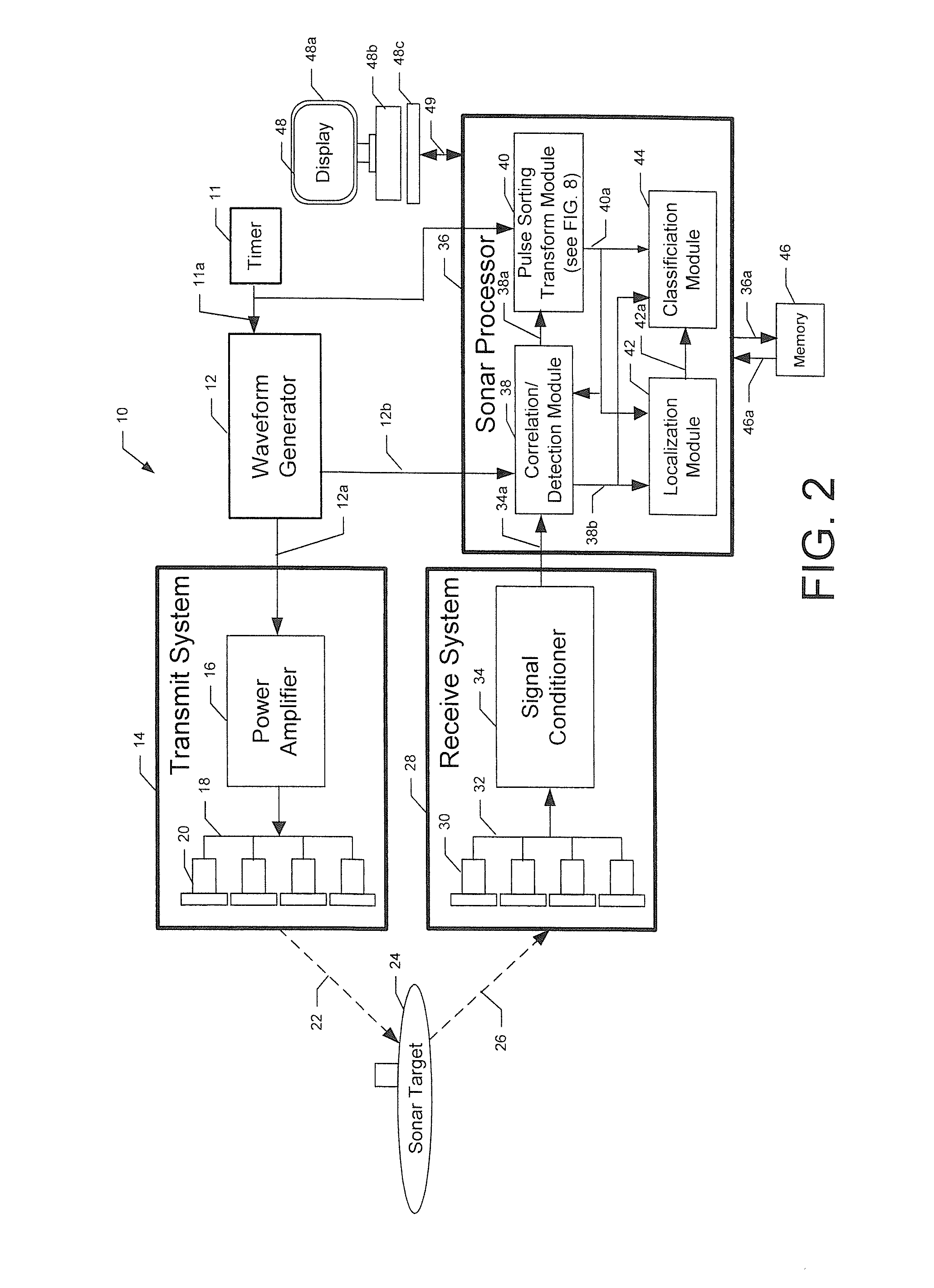Active sonar system and active sonar method using a pulse sorting transform
a sonar system and pulse sorting technology, applied in the field of active sonar systems, can solve the problems of difficult detection, object detection by sound, and very noisy underwater acoustic environment, and achieve the effects of reducing the probability of false alarm, localizing and characterizing, and improving detection probability
- Summary
- Abstract
- Description
- Claims
- Application Information
AI Technical Summary
Benefits of technology
Problems solved by technology
Method used
Image
Examples
Embodiment Construction
[0028]Before describing the present invention, some introductory concepts and terminology are explained.
[0029]It should be understood that a detection of a target in the water is probabilistic. As used herein, the term “probability of detection” is used to describe a probability that a real target echo is detected, when a real target echo exists, within one active sonar ping cycle or within any selected number of active sonar ping cycles. A high processing detection threshold tends to reduce a probability of detection and a low processing detection threshold tends to increase a probability of detection.
[0030]As used herein, the term “probability of false alarm” is used to describe a probability that, within one active sonar ping cycle or within any selected number of active sonar ping cycles, a false echo will be detected, i.e., there will be a false detection of an echo that is really noise. A high processing detection threshold tends to reduce a probability of false alarm and a lo...
PUM
 Login to View More
Login to View More Abstract
Description
Claims
Application Information
 Login to View More
Login to View More - R&D
- Intellectual Property
- Life Sciences
- Materials
- Tech Scout
- Unparalleled Data Quality
- Higher Quality Content
- 60% Fewer Hallucinations
Browse by: Latest US Patents, China's latest patents, Technical Efficacy Thesaurus, Application Domain, Technology Topic, Popular Technical Reports.
© 2025 PatSnap. All rights reserved.Legal|Privacy policy|Modern Slavery Act Transparency Statement|Sitemap|About US| Contact US: help@patsnap.com



